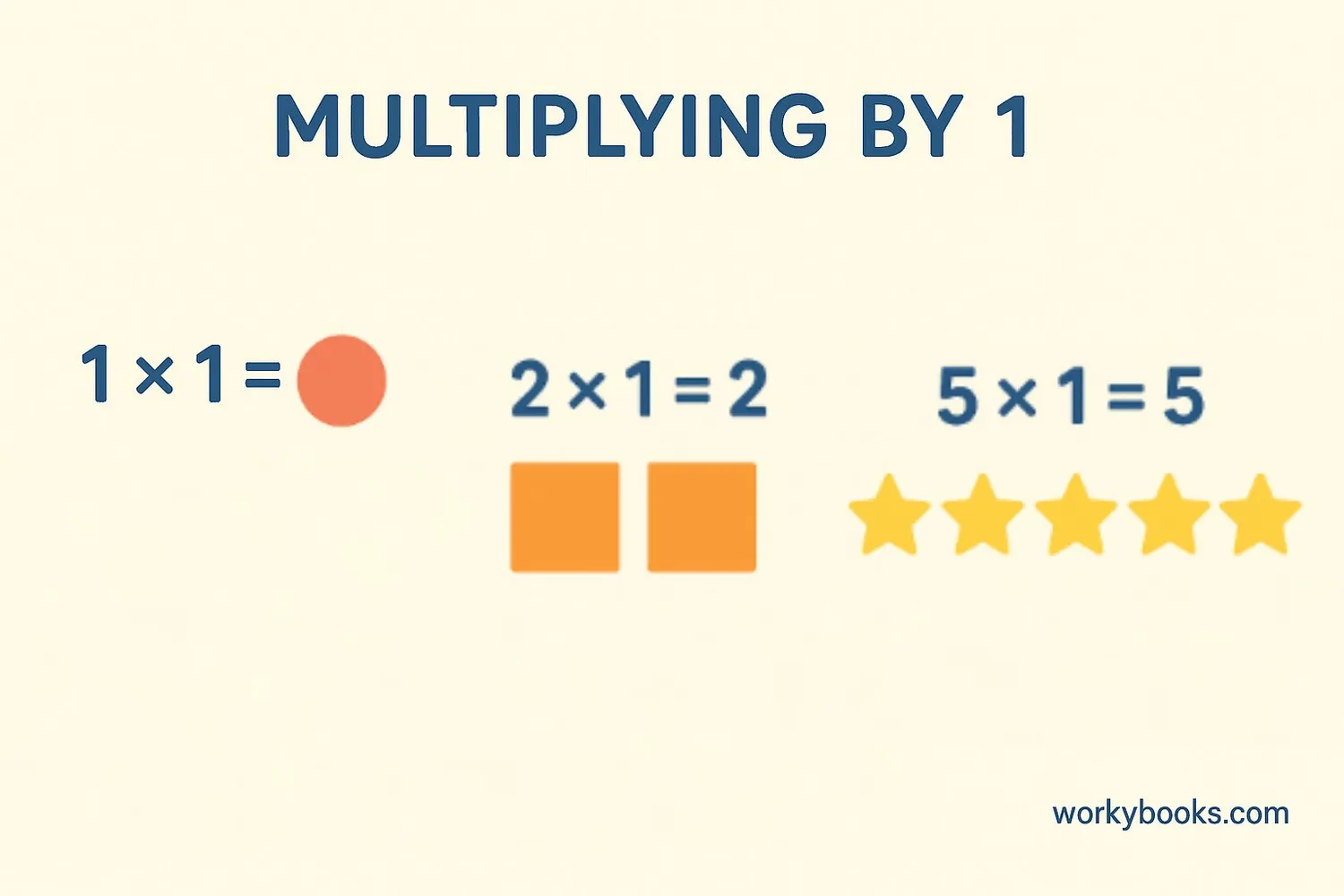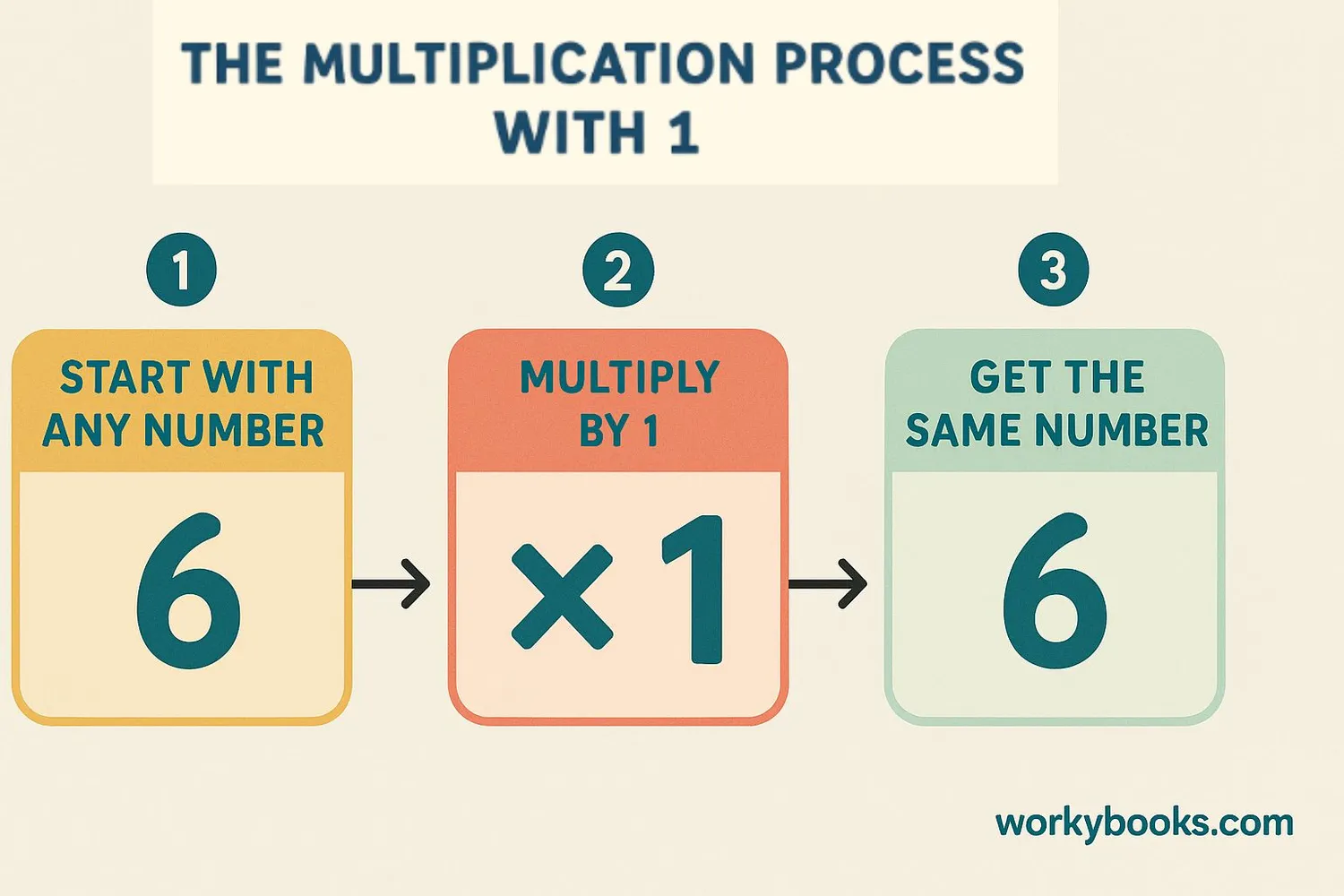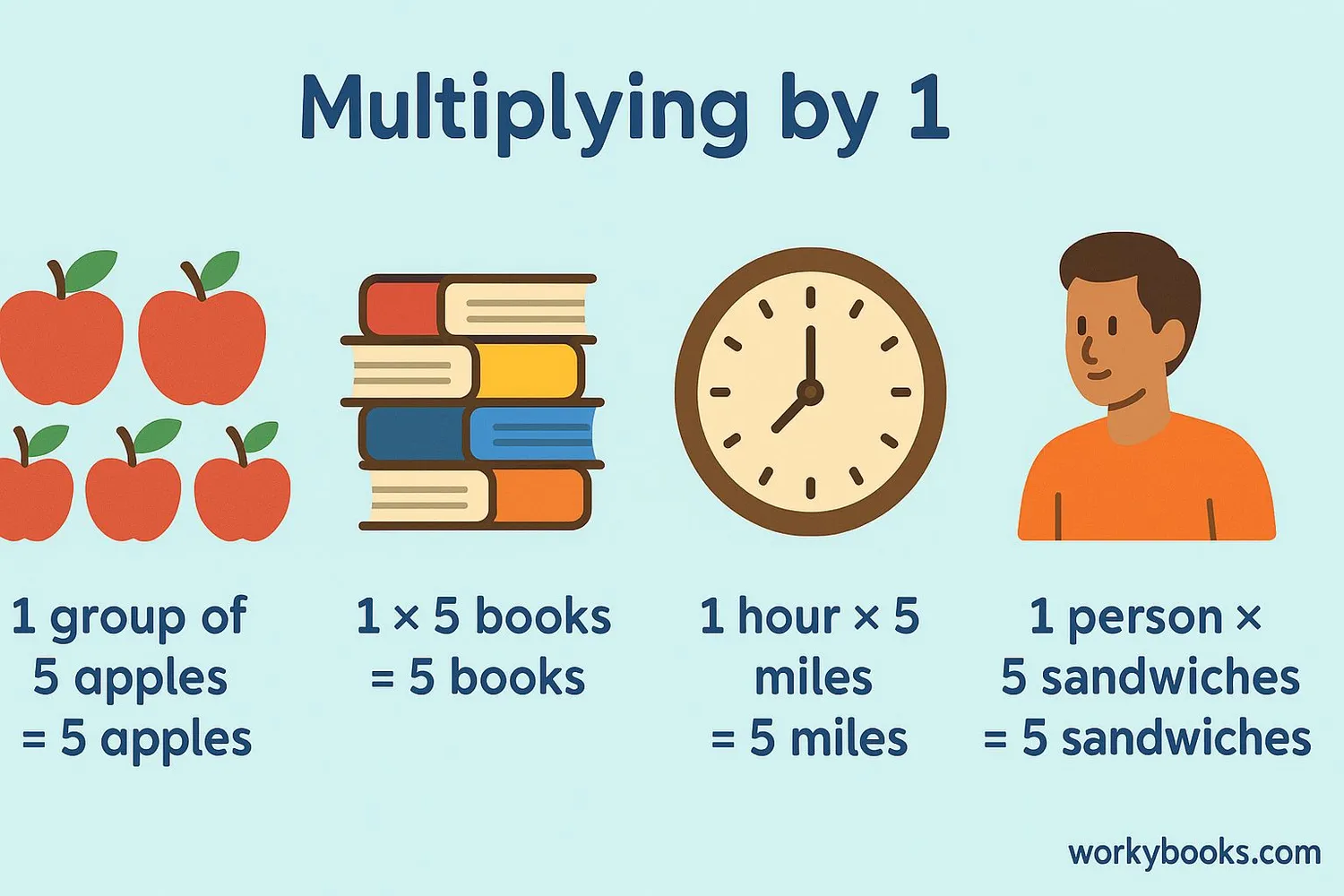Multiplicative Identity Property of 1 - Definition, Examples, Quiz, FAQ, Trivia
Learn about how the number 1 works in multiplication with easy explanations and practice activities
What is the Multiplicative Identity Property?

The multiplicative identity property is a special rule in mathematics that tells us what happens when we multiply any number by 1. This property says that when you multiply any number by 1, the number stays the same.
Think of it like this: if you have 5 cookies and you multiply them by 1, you still have 5 cookies. The number 1 is special because it doesn't change other numbers when you multiply by it. We call 1 the "multiplicative identity" because it keeps numbers identical to what they were before.
This property works with all kinds of numbers: whole numbers, fractions, decimals, and even negative numbers. No matter what number you choose, when you multiply it by 1, it stays exactly the same.
Identity Property Formula
For any number a, multiplying by 1 gives you the same number a.
Key Concept
The number 1 is called the multiplicative identity because it doesn't change other numbers when you multiply by it.
How the Multiplicative Identity Property Works

Let's explore how the multiplicative identity property works with different types of numbers:
With Whole Numbers:
7 × 1 = 7
1 × 15 = 15
With Fractions:
½ × 1 = ½
1 × ¾ = ¾
With Decimals:
2.5 × 1 = 2.5
1 × 0.75 = 0.75
With Negative Numbers:
-8 × 1 = -8
1 × (-4) = -4
The multiplicative identity property is helpful in solving math problems because it lets us simplify expressions. For example, if we see 1 × x, we know it's just x. This property is also why we can write numbers without showing multiplication by 1 - it's understood to be there!
Remember
The multiplicative identity property only works with multiplication, not addition. For addition, the identity element is 0, not 1.
Examples of the Multiplicative Identity Property

Let's look at some examples of the multiplicative identity property in action:
Number Examples
| Number | Multiplied by 1 | Result |
|---|---|---|
| 4 | 4 × 1 | 4 |
| 12 | 12 × 1 | 12 |
| ½ | ½ × 1 | ½ |
| 0.25 | 0.25 × 1 | 0.25 |
| -6 | -6 × 1 | -6 |
| 100 | 1 × 100 | 100 |
Real-World Examples
Example 1: If you have 1 bag with 8 marbles, how many marbles do you have?
Solution: 1 × 8 = 8 marbles
Example 2: If you have 7 boxes and each box contains 1 toy, how many toys do you have?
Solution: 7 × 1 = 7 toys
Example 3: A recipe calls for ¾ cup of flour. If you make 1 batch, how much flour do you need?
Solution: 1 × ¾ = ¾ cup of flour
Example 4: You have 1 group of 12 students. How many students are there?
Solution: 1 × 12 = 12 students
Practice Tip
Look for examples of the multiplicative identity property in your daily life. Whenever you see "1 × something" or "something × 1", the answer will always be that same something!
Practice Quiz
Test your understanding of the multiplicative identity property with this 5-question quiz. Choose the correct answer for each question.
Frequently Asked Questions
Here are answers to common questions about the multiplicative identity property:
Math Trivia
Discover interesting facts about numbers and mathematical properties:
Ancient Number Systems
The concept of 1 as a number developed slowly in human history. Early number systems often didn't have a symbol for 1—they would just use a single mark for a single object.
Universal Concept
The multiplicative identity property works the same way in all number systems around the world. No matter what language you speak or what symbols you use for numbers, 1 times any number equals that number.
Beyond Whole Numbers
The multiplicative identity property works with very large numbers (like 1 × 1,000,000 = 1,000,000) and very small numbers (like 1 × 0.000001 = 0.000001). It even works with imaginary numbers in advanced mathematics!
Computer Math
Computers use the multiplicative identity property in their calculations. When programming, multiplying by 1 is often used to make sure a value doesn't change while the code is running.





